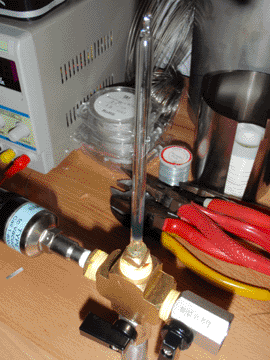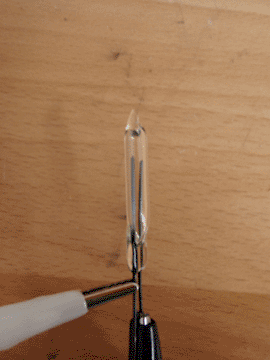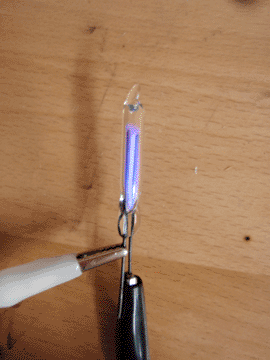


To practice the glassworking skills needed to make vacuum tubes, I made a small glow tube. I started with a 6 inch length of 6mm flint glass (soda-lime glass) tubing, and a 4 inch length of 1mm titanium wire. I folded the wire into a hairpin shape, and sealed it into one end of the tubing. I then clipped off the bend in the hairpin to seperate the two electrodes. I hot-glued the other end of the tubing to my vacuum pump manifold through a 3/8 NPT plug with a hole drilled in it, and by fiddling with the valves I adjusted the pressure in the tube to 1.5 Torr. At this point the tube worked acceptably, and produced a dim purple glow with around 500V applied through a 100K resistor. I then sealed off the tube by heating it with a blowtorch in the middle so that it collapsed in on itself due to the vacuum. Once the tube was sealed off, I continued applying heat while slowly pulling and twisting. The glow tube separated cleanly, and functioned just as it had when attached to the pump. I let it sit overnight and tested it again the next day, and no change was observed. This indicates that the seals are good.
Overall this project was much easier than I expected. It also confirmed the viability of titanium as a feedthrough material. Typically for soft glass, dumet wire (copper plated nickel-iron wire) is used, but is expensive and difficult to find in small amounts. Titanium on the other hand is relatively cheap, available in small quantities from China, and is strong enough to be used in one piece for the pins, the feedthroughs, and the internal structure of the tube. It also acts as a bulk (non-evaporating) getter when heated, which I will utilize when making true vacuum tubes such as diodes and triodes.